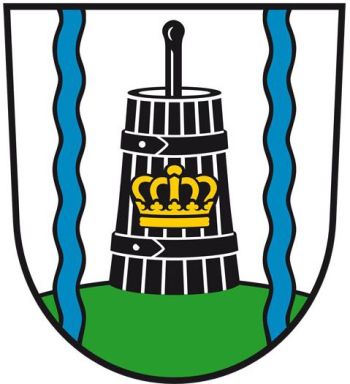Königshorst
Revision as of 11:03, 17 June 2023 by Knorrepoes (talk | contribs) (Created page with "{| class="wikitable" |- style="vertical-align:top;" |center|350 px|alt=Wappen von {{PAGENAME}}/Arms (crest) of {{PAGENAME}} | <center>''' {{uc:{{PAGENAME}}}} '''</center><br> '''Country''' : Germany 60 px|right<br><br><br><br> '''State''' : Brandenburg60 px|right<br><br><br><br> '''District (Kreis)''' : Ostprignitz-Ruppin60 px|right<br><br><br><br> '''Incorpo...")
|
Country : Germany State : Brandenburg District (Kreis) : Ostprignitz-Ruppin Incorportaed into:
|
| German | In Silber zwischen zwei blauen Wellenstäben auf grünem Berg ein schwarzes Butterfass, belegt mit einer goldenen Königskrone. |
| English | blazon wanted |
Origin/meaning
The green hill and the two wavy pales refer to the -horst part of the name, which means here a dry hill in a marshy area. The Prussian King Friedrich Wilhelm I (crown) drained the marshes by digging canals (the wavy pales again) and had the area settled by Dutch farmers. They became famous for their butter and founded a 'butter-and-cheese-school' in 1732 for the daughters of farmers in the region, hence the butter churn.
Literature: MOZ



